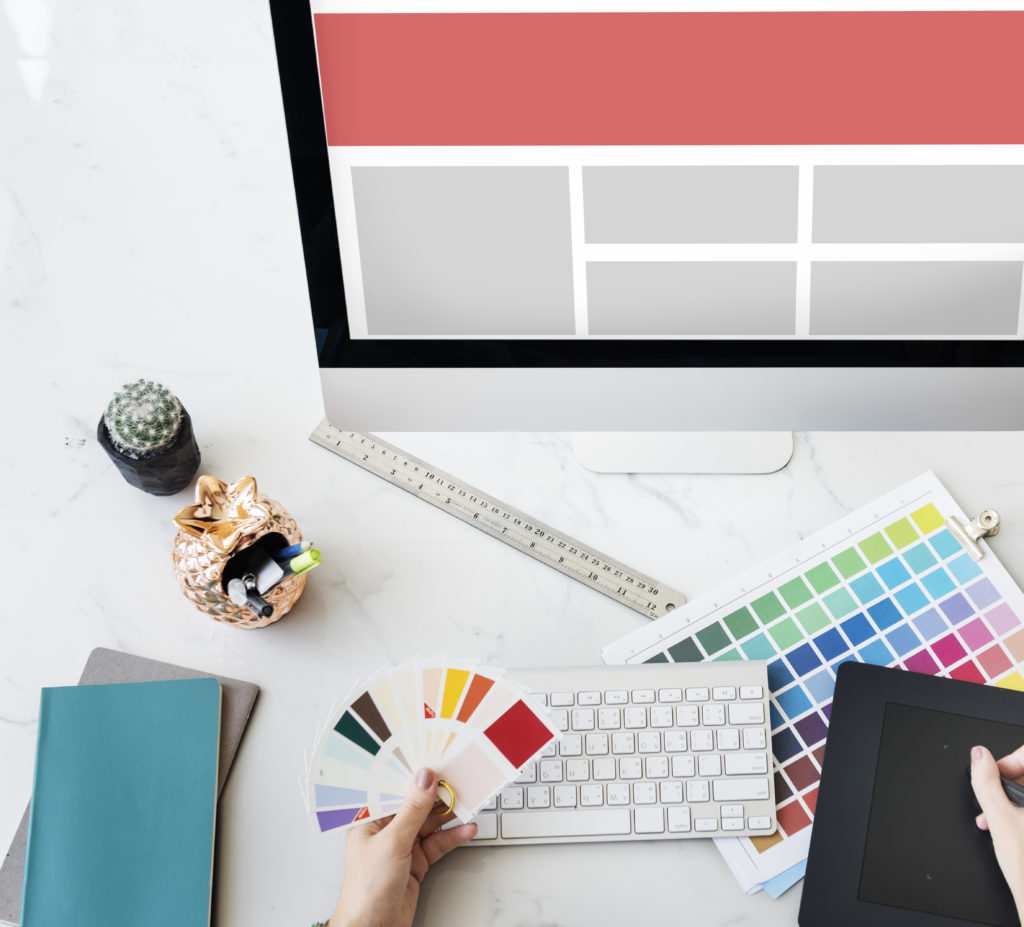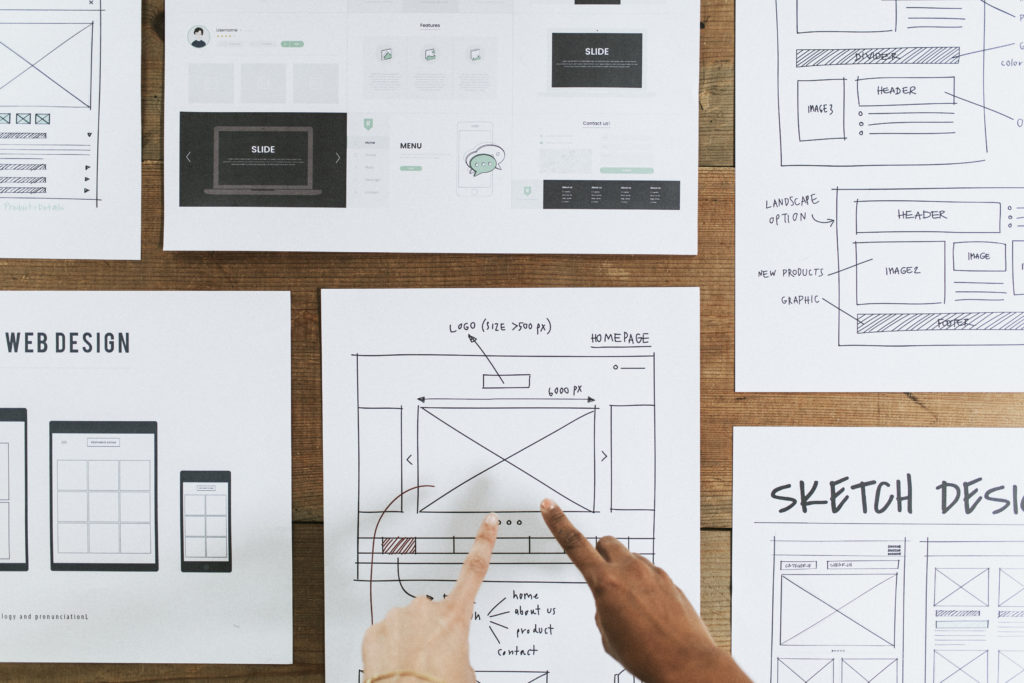There are many factors involved in web design. Some of these include content strategy, user experience, conversion optimization, usability, accessibility, SEO, etc. But how do we go from concept to creation in web design?
In this article we’ll be discussing the process that goes into creating a website and what it takes to get there.

1. Know What Type of Website You Want To Create
Before you jump into designing a website, you first need to decide what type of site you want to create.
Do you want a personal blog? Maybe you want to run an online store? Perhaps you want to launch a new eCommerce site?
Whatever your idea may be, you need to know what type of site you’re going to create before you dive in.
There are three main types of websites: blogs, eCommerce sites, and informational sites. Each has its pros and cons, and knowing these differences will help you determine which type of site would be most appropriate for your project.
2. Research Different Types Of Websites
After you know what type of site it is you want to create, you need to research different types of websites.
This means also researching different platforms, such as WordPress, Joomla, Drupal, Squarespace, Wix, and others.
It also means researching different themes, plugins, and templates. This will give you a better understanding of each platform and allow you to pick the right tools for your project.
For example, if you plan on using WordPress for your website, you should learn about the various plugins available for WordPress.
Some of these include Yoast SEO, Jetpack, Gravity Forms, WooCommerce, and others.
3. Determine How Much Time And Money You Need For Your Project
Now that you know what type of website you want to create, and you understand the basics of the different platforms and tools, you need to determine how much time and money you need for your project.
This is especially true if you’re working alone. If you don’t have any prior knowledge of web development, you may find yourself spending hours trying to figure out how to accomplish something simple.
So, before you spend too much time and money on your project, ask yourself:
- Am I willing to invest the amount of time necessary to complete my project?
- Will I be able to devote the amount of time needed to complete my project? If not, then maybe you shouldn’t pursue this project.
- Can I afford to pay for the services of a professional web developer?
- Will I have access to the resources required to complete my project? For example, if you’re building a website for a client, you’ll need to provide him/her with hosting space, domain registration, email accounts, etc.
These questions will help you determine whether you can handle the project on your own or if you need to hire a professional web developer.
4. Decide On A Budget
Once you’ve determined how much time and money it takes to complete your project, you can set a budget.
A budget helps you avoid overspending on your project. It also allows you to focus on completing your project within your allotted time and budget.
Setting a realistic budget will ensure that you don’t exceed your time limit or spend more than you planned.
5. Set Up An Initial Plan

Next, you need to come up with an initial plan.
An initial plan is simply a rough outline of what you want your final website to look like.
This doesn’t mean that you won’t change anything once you begin creating your website. But, it does mean that you’ll have a general idea of what you want your website to look like. This will save you time and energy when you start designing your website.
5. Create The Website’s Structure
After you have an initial plan, you can move onto creating the structure of your website.
The structure of your website refers to the basic layout of the pages on your website.
You’ll need to decide where all of your content goes (such as text, images, videos, links, etc.) and which page(s) you’ll use to display this content.
6. Add Content To Each Page
After you have a general idea of how your website will work, you can add content to each page.
You’ll need to think about the purpose of each page and make sure that it serves its intended purpose.
If you’re planning on having multiple pages on your website, you’ll need to consider how these pages are related to one another.
For example, if you have a blog, you might include a “Contact Us” page at the bottom of every post.
7. Test Your Site
Testing is essential to web design. Without testing, you won’t be able to find out whether your site works properly or not. And without knowing whether your site works, you won’t be ready to launch it publicly.
There are two types of tests: functional and usability. Functional tests determine whether your site functions correctly. Usability tests determine whether your site is user friendly.
Functional tests include things like checking spelling errors, making sure there aren’t any broken links, and ensuring that pages load quickly. These tests help ensure that your site is working properly.
Usability tests include things like determining whether your navigation menu makes sense, whether your site loads fast enough, and whether users understand where they should go next when navigating your site. These tests help ensure your site is user friendly, meaning it’s intuitive and easy to use.
8. Launch Your Website
Once you’ve completed your website, you’ll want to launch it. Launching your website means putting it online so people can see it for themselves.
9. Update Your Site

As your business grows, so will your website.
If you’re not updating your site regularly, you’re losing out on opportunities to improve your web design. The most important step in any redesign project is to update your site. This includes adding new content, fixing broken links, improving navigation, and making sure everything looks great.
There are several ways to update your site. The most common method is through blogging. Blogging allows you to add new content at any time, including during off hours when you’re not working.
10. Maintain It
Maintaining your website is just as important as launching it.
Once you launch your website, there are several steps you can take to maintain it.
First, you’ll want to check for broken links. If you link to other websites within your website, then you’ll want to make sure that those links still work.
Second, you’ll want to clean up your site.
This means removing unnecessary files and making sure that everything looks good.
Conclusion
Web design is a creative process that requires both technical skill and artistic vision.
There are many different ways to approach the creation of a website, but most designers agree that the first step is to come up with a concept. This could be anything from a logo to a color scheme to a specific page layout. Once you have a clear idea of what you want your site to look like, you can begin working on the details.
Don’t worry if you aren’t sure where to start. Just follow these steps and you’ll soon find yourself creating beautiful websites.



